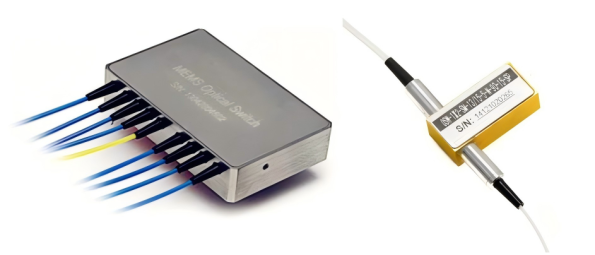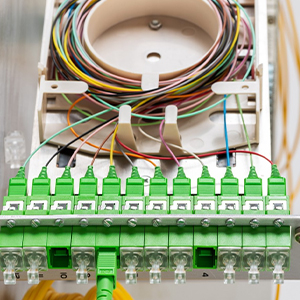1. Introduction
With the continuous advancement of communication technologies, optical networks have become the mainstream for modern data transmission. In optical networks, optical switches play a critical role in enhancing network flexibility, bandwidth utilization, and reliability. These key components of optical communication systems effectively overcome the bottlenecks of traditional electrical signal processing by enabling the switching of optical signal paths, handling higher-speed optical signals, and maintaining low latency.
This article delves into the working principles, classifications, and importance of optical switches in practical applications.
2. Working Principle of Optical Switches
Optical switches control the path of optical signals, eliminating the need to convert them into electrical form, as required in traditional electronic switches. This bypasses the delays and energy losses typically caused by signal conversion. The core function of optical switches is to adjust the transmission direction of optical signals, utilizing several key technologies:
- MEMS Technology (Micro-Electro-Mechanical Systems): MEMS optical switches use micro mirrors or reflectors to change the path of optical signals. These switches offer high precision and flexibility, making them ideal for high-speed data transmission networks.
- Opto-Mechanical Optical Switch: These switches use mechanical movement to direct optical signals through different paths. This type of switch typically employs a mechanical system such as mirrors, shutters, or prisms to physically redirect the light path.
3. Types of Optical Switches
Optical switches can be categorized into various types based on their channel configurations, technologies, and applications. Here are the most common types of optical switches:
- 1×1 Optical Switch: This basic configuration has one input and one output port. It is used for basic signal path selection or optical signal routing in networks.
- 1×2 Optical Switch: With one input and two output ports, this switch distributes an incoming optical signal to two different paths. It is often used for signal protection, network redundancy, and data distribution.
- 2×2 Optical Switch: A 2×2 optical switch has two input and two output ports, facilitating signal switching between different paths. It is widely used in optical networks for path selection and signal exchange.
- 2×2B Optical Switch: The 2×2B optical switch is an enhanced version of the 2×2 switch, featuring redundant paths and supporting bidirectional switching. It is ideal for more complex optical networks, such as automatic failover scenarios.
- D2×2B Optical Switch: These switches are designed for complex network architectures, supporting multiple input and output channels. They are suitable for long-distance fiber optic communication and high-capacity data center interconnects.
4. Applications of Optical Switches
Optical switches are increasingly used in various applications within optical communication and data transmission. Key applications include:
- Path Selection in Optical Networks: Optical switches ensure redundancy and reliability in optical fiber-to-the-home (FTTH) and large-scale optical communication systems by selecting different signal paths.
- Optical Interconnection in Data Centers: In modern data centers, optical switches offer low-latency, high-bandwidth interconnection solutions, becoming vital for expanding data transmission needs.
- Fiber Optic Communication: In long-distance fiber optic communication, optical switches dynamically adjust optical routes, improving bandwidth utilization and network reliability in fiber optic networks.
5. Advantages of Optical Switches
Compared to traditional electrical switches, optical switches provide several key advantages:
- Low Latency: Since optical switches operate directly with optical signals, they have minimal switching latency, ideal for real-time applications.
- High Bandwidth: They support high-frequency signals, enabling larger bandwidths, essential for handling large data volumes and high-speed rates in modern communication networks.
- Energy Efficiency: Optical switches consume significantly less power than their electrical counterparts, especially in large-scale optical networks and data centers.
6. Future Trends and Challenges
Although optical switches are already essential in optical communication, they face challenges related to higher demand for bandwidth and speed. Future developments will focus on:
- Improved switching speed and precision.
- Lower power consumption and better integration.
- Cost reduction and reliability improvements in mechanical-based switches.
7. Conclusion
Optical switches are crucial components in optical networks, offering benefits like low latency, high bandwidth, and high reliability. As the demand for high-speed data transmission grows, these switches will become increasingly prevalent in optical communication systems, data centers, and long-distance fiber optic communication. With continuous advancements in optical switching technology, they will play a key role in the future of high-performance optical networks.











